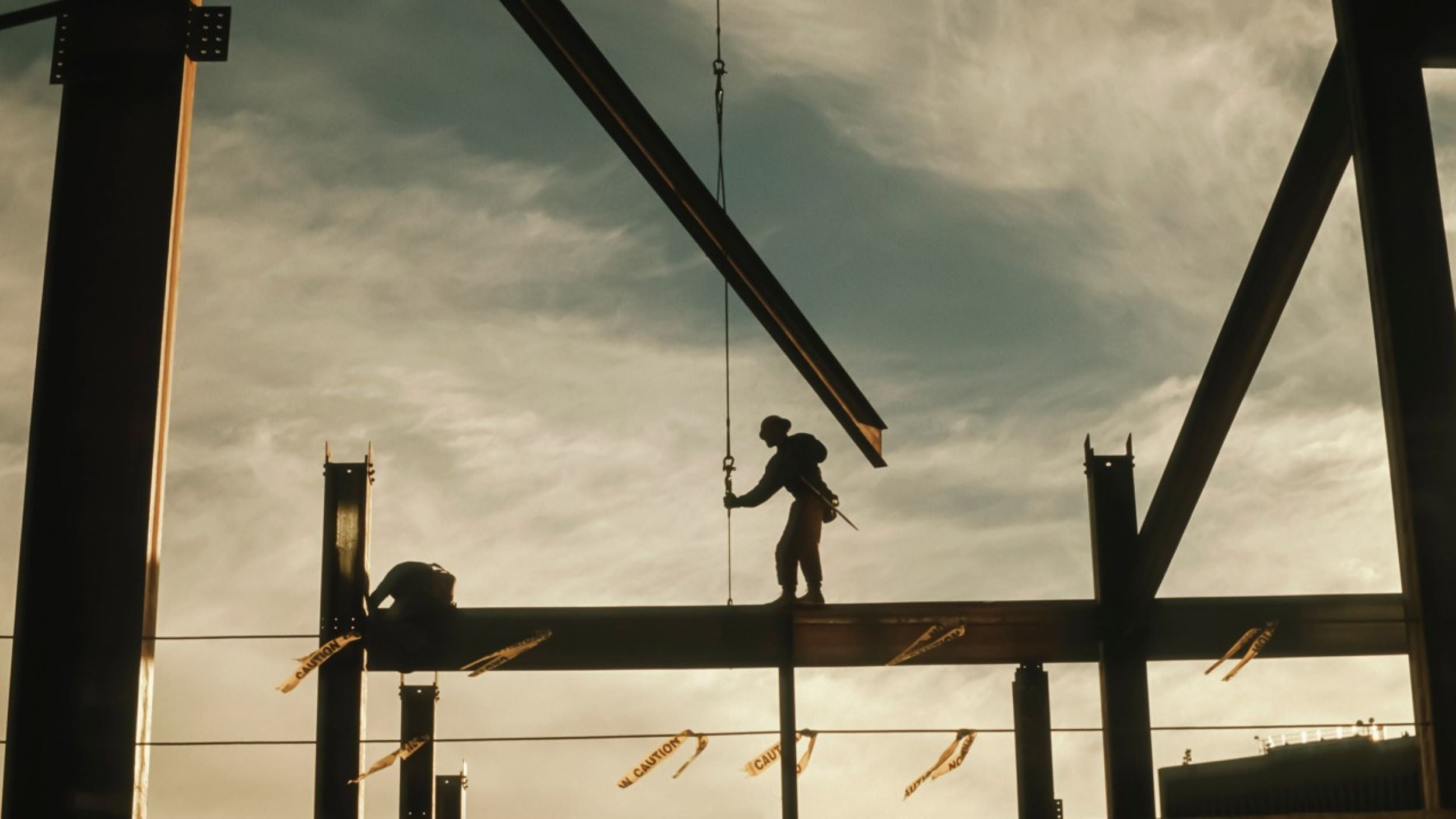President Biden’s infrastructure legislative bonanza: Now what?

Andy Blocker, Global Head of Public Policy & Head of US Government Affairs
Jennifer Flitton, Senior Vice President, US Government Affairs
Key takeaways
Infrastructure Investment and Jobs Act
Even as President Biden crisscrosses the country in a perceived victory tour, implementation is likely to play out over more than a decade.
CHIPS and Science Act
Addressing workforce constraints will be a key priority to ensure the appropriate labor supply to meet the demands of high-tech manufacturing.
Inflation Reduction Act
As the logistical administering of funds remains in flux, companies have announced tens of billions of dollars in renewable energy, battery, and electric vehicle projects.
2020 presidential candidate Joe Biden vigorously campaigned on his political prowess to strike bipartisan legislative deals as a rationale for why Americans should select him as the 46th Commander in Chief. He spoke often and proudly of his 36 years in the Senate as the appropriate elixir to get the country back on track. His naysayers were equally vocal that the days of big bipartisan legislative victories were a relic and unachievable; with a 50-50 Senate and a razor-thin majority in the House, the critics looked like they had the upper hand in predicting that President Joe Biden would come up short. Against tough odds, however, Biden delivered on his campaign promises with not just one but three generational altering infrastructure policy packages in the first two years of his presidency. The path to success was never a straight line. There were many breakdowns (including countless messaging pitstops) along the way, but the 117th Congress delivered the:
- Infrastructure Investment and Jobs Act (IIJA)
- CHIPS and Science Act (CHIPS)
- Inflation Reduction Act (IRA)
Successfully navigating the legislative and political Thunderdome in Washington is never easy. But Congress not only presented these landmark infrastructure packages to Biden, they did so with IIJA and CHIPS in a bipartisan fashion. In April 2021, we penned a piece, Infrastructure: A policy reality or political unicorn, on the contours and prospects of an infrastructure package; we knew the opportunities and hurdles, but few expected Biden to be riding into his reelection with the daunting task of translating a policy necessity into a unicorn reality.
Passing the IIJA, CHIPS, and IRA are impressive feats, but implementing the programs and deploying the trillions in funds in a timely and organized fashion is an equally challenging task. All three pieces of legislation have significant implementation hurdles, but with trillions on the line, programs to establish, thousands of personnel to hire, inflationary economics to consider, and multiple stakeholders to placate, the pressure is on to deliver. There are numerous hoops and ladders to satisfy for program recipients, including labor, equitable deployment, sourcing criteria, environmental justice, and Buy America provisions. And for many of the programs within the legislation, they are building the plane while flying it. Thus, only about 5% of these massive packages has been spent. Further complicating matters is the implementation being orchestrated under the watchful eye of a House Republican majority relishing the possibility of funding allocation missteps.
Let’s take a peek at each of the packages and provide a status update:
Infrastructure Investment and Jobs Act
The IIJA has both traditional and novel funding provisions to deploy. The traditional infrastructure of various surface transportation – highways, roads, and bridges – are deployed to states and local communities via formula funding, federally regulated awards that are pre-determined and often occur annually. Competitive funding is discretionary and is awarded based on a competitive proposal selection process determined by the merits of the application. In the case of IIJA, the novelty lies in the sheer amount of federal funds up for grabs by the private sector and the wide-ranging breadth of programs within the transportation, broadband, energy, and water sectors.
As of January, over $185 billion in IIJA funding was available at the state level. But roadblocks remain. The ongoing partisan push and pull regarding permitting reform, a critical piece of any new infrastructure project, and agency policy guidance on how states should spend the money, have created even more delays.
For example, this February, the Federal Highway Administration (FHWA) issued a new policy memo that will supersede one issued in December 2021 that advised states to use their infrastructure money to repair existing assets. The document is intended to appease Republicans who said the Biden administration was attempting to go beyond what Congress intended to require as part of the enacted legislation.
Also in February, The House Natural Resources Committee held a hearing titled “Building United States Infrastructure through Limited Delays and Efficient Reviews.” A key stakeholder in the conversation, the National Association of Manufacturers (NAM), has urged lawmakers to remove the red tape while calling for greater transparency and consistency on natural resource development policy and environmental reviews while streamlining and reducing inefficiency in reviews across the board. Still, more than 10,000 projects connected to IIJA investments are moving forward with more in the planning stage. Even as Biden crisscrosses the country on a perceived victory tour for the $1 trillion infrastructure package, implementation will not be instantaneous and is likely to play out over more than a decade.
CHIPS and Science Act
CHIPS provides $280 billion in new federal funding to ensure the United States has the technology and advanced manufacturing economic foundation for success. The legislation was bipartisan and was signed by Biden on Aug. 9, 2021.
CHIPS seeks to ensure that America has the appropriate building blocks to be the global leader in semiconductor chip manufacturing with domestic research to onshore production via federal investments and public private partnerships. Within the $280 billion, about $50 billion is for chip manufacturing in the United States, with a goal of eliminating the reliance on foreign countries for the country’s semiconductor and component needs. The investments will go to design, production, research and development, as well as packaging capacity.
Department of Commerce (DOC) Secretary Gina Raimondo, who oversees implementation of CHIPS, has outlined her vision for key benchmarks. In the first week of March, the DOC launched its first application for CHIPS funding for commercial manufacturing with the intent to incentivize United States chips manufacturing. In late spring, DOC plans to announce funding opportunities for semiconductor materials and equipment facilities, with a funding application period to follow in the fall of 2023. These various announcements will include guidance, process, and timelines for interested stakeholders.
Importantly, addressing workforce constraints will also be a key priority for both the Biden administration and Congress to ensure that the CHIPS funding rollout has the appropriate labor supply to meet the demands of high-tech manufacturing. In late February, the Commerce Department made an unexpected announcement that initially created some head scratching. As part of company funding proposals for CHIPS money, the Commerce Department now required a plan that includes childcare for employees of companies that apply for tens of billions in government funding to make semiconductors. That improvised add-on by the Biden administration was not mandated in the enacted legislation but did advance parallel policy priorities – increased access to childcare. New guidance is expected to be released soon that clarifies those seeking funding should strongly consider defraying the price of childcare such that it is within reach for low- and medium-income households.
Inflation Reduction Act
In late December and before the new House GOP majority of the 118th Congress was ushered in, the White House released an online Inflation Reduction Act Guidebook, an overview of who and what is eligible for funding within the clean energy, climate mitigation and resilience, agriculture, and conservation-related tax incentives and investment programs established thus far. With the IRA’s more complicated health care provisions and certain corporate tax reforms omitted, the creation of this guidebook signals a significant implementation leap forward.
But wait. Not so fast. As with the IIJA and CHIPS, there are headwinds. A favorite sound bite among the GOP revolves around the $45.6 billion in Internal Revenue Service funding designated for tax evasion enforcement. House Speaker Kevin McCarthy warns that 87,000 IRS agents are coming for middle-class America’s tax dollars. To counter, Treasury Secretary Janet Yellen has publicly directed IRS officials not to use new funding secured for the agency to increase audits on households making under $400,000 annually. Republicans, though, have moved to slash funding of the IRS, the central agency charged with implementing the climate law's incentives, over concerns that Democrats have expanded its mandate.
As the logistical administering of funds remains in flux, in the seven months since the IRA became law, companies have announced tens of billions of dollars in renewable energy, battery, and electric vehicle projects that will benefit from incentives aimed at expanding domestic manufacturing in clean energy and reducing dependence on Chinese imports. These seemingly huge wins hide a problem that transcends beyond partisan lines – the lack of an expert workforce. The same cutting-edge companies Biden is promoting are the same companies that are struggling to hire skilled workers to make batteries, design complex greenhouse reduction systems, build solar panels, and accelerate construction of state-of-the-art sustainability hubs. It’s a tricky balancing act. More than 100,000 clean-energy job openings have sprung up across the US, but the labor shortages hinder the otherwise promising carbon removal industry development.
One labor shortage that is not a problem with the IRA is lawyers, lobbyists, and consultants working to ensure the Biden administration’s regulatory interpretation produces favorable outcomes for interested stakeholders. The Department of Treasury’s guidance process has drawn heightened attention from several IRA architects, including Senate Energy and Natural Resources Chairman Joe Manchin (D-WV). Senator Manchin has raised concerns on the need to strictly interpret the IRA’s Congressional legislative language as well as intent to ensure it rekindles domestic clean energy manufacturing and produces American jobs. The Senator has been particularly focused on the electric vehicle provisions within the IRA and how they will impact both domestic and international supply chains.
Conclusion: The hard part begins
Biden and Congress should be complimented for identifying the country’s infrastructure needs and providing the right mix of traditional and novel funding streams to best position the country for success. Now the hard part: deployment. Washington pundits are already discussing the variables that could propel or stymie electoral success in 2024, but a big part of that story will be the implementation of IIJA, IRA, and CHIPS. The rollout will sometimes feel like a highway express lane and, at times, a rush-hour parking lot. The question remains whether the American people have the patience and appreciation for these historic investments. It’s way too early to tell, but successes and failures in getting these programs off the ground will at least serve as background music to whatever the lead political vocals are singing in the coming months before 2024 shifts into high gear.
With contributions from Cogent Strategies
当資料ご利用上のご注意
当資料は情報提供を目的として、インベスコ・アセット・マネジメント株式会社(以下、「当社」)のグループに属する運用プロフェッショナルが英文で作成したものであり、法令に基づく開示書類でも金融商品取引契約の締結の勧誘資料でもありません。内容には正確を期していますが、必ずしも完全性を当社が保証するものではありません。また、当資料は信頼できる情報に基づいて作成されたものですが、その情報の確実性あるいは完結性を表明するものではありません。当資料に記載されている内容は既に変更されている場合があり、また、予告なく変更される場合があります。当資料には将来の市場の見通し等に関する記述が含まれている場合がありますが、それらは資料作成時における作成者の見解であり、将来の動向や成果を保証するものではありません。また、当資料に示す見解は、インベスコの他の運用チームの見解と異なる場合があります。過去のパフォーマンスや動向は将来の収益や成果を保証するものではありません。当社の事前の承認なく、当資料の一部または全部を使用、複製、転用、配布等することを禁じます。
IM2023-030
そのほかの投資関連情報はこちらをご覧ください。https://www.invesco.com/jp/ja/institutional/insights.html

